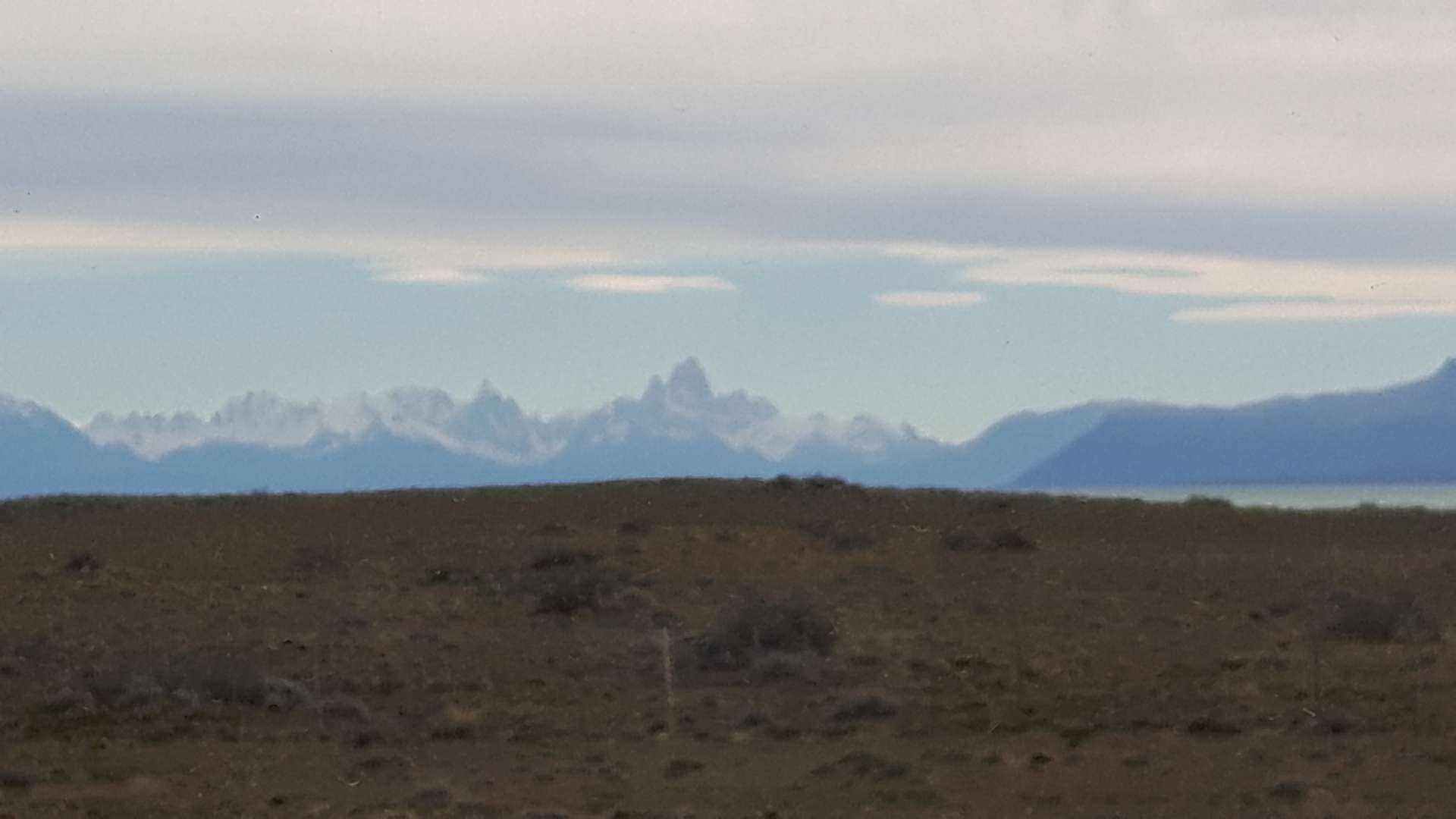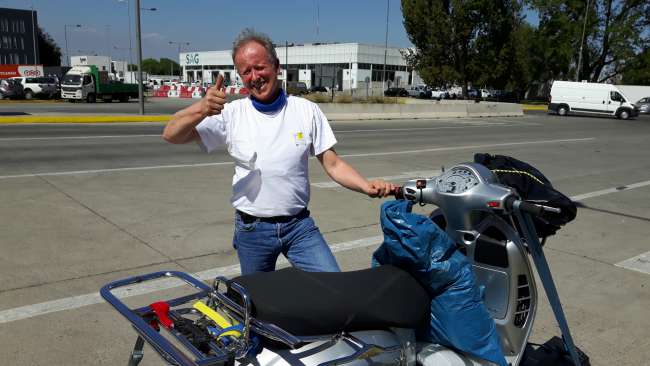from 10.05.: From San Pedro de Atacama - 2,440 m - to Tocopilla
Tshaj tawm: 12.05.2017
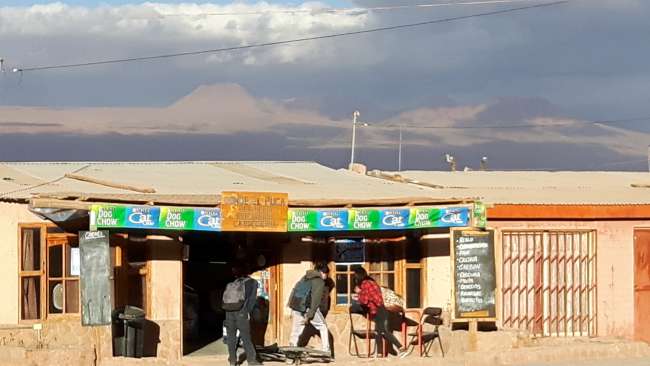
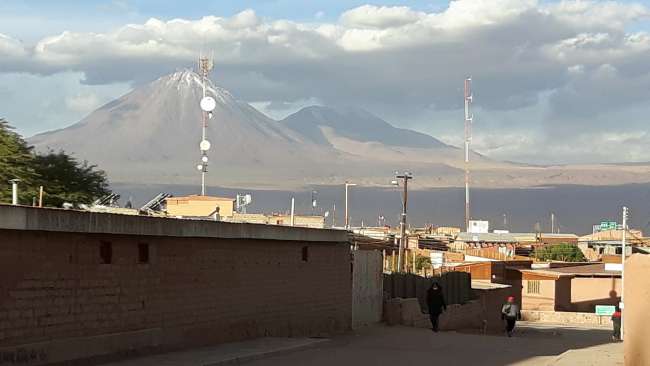
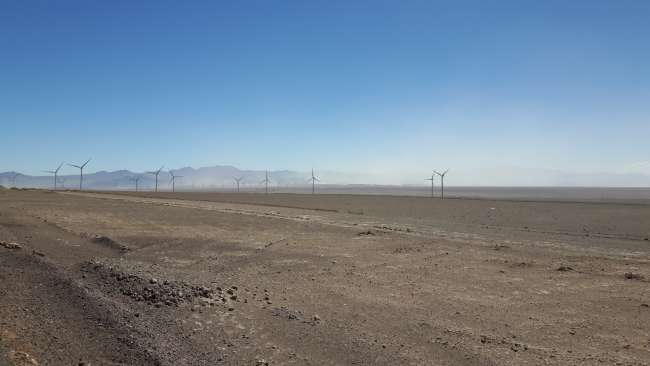
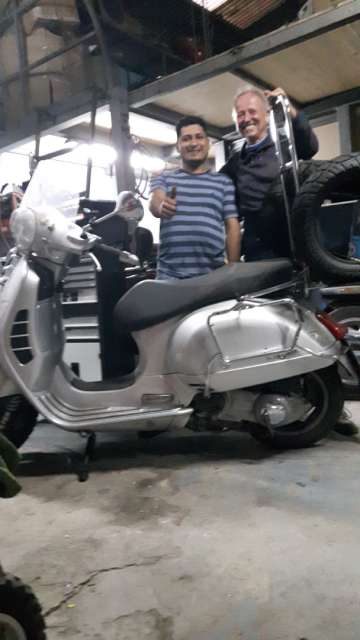
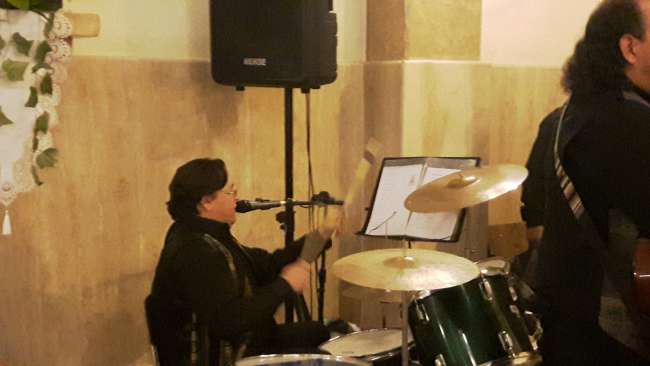
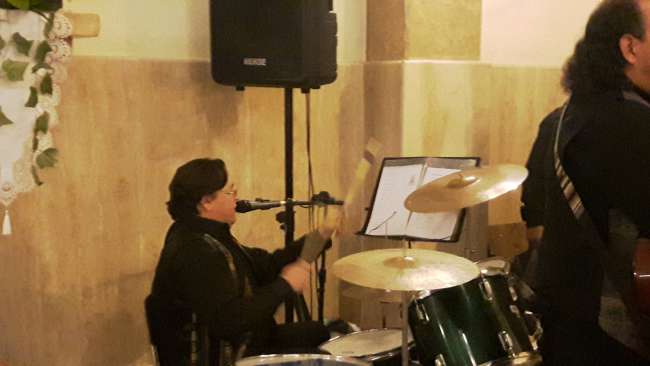
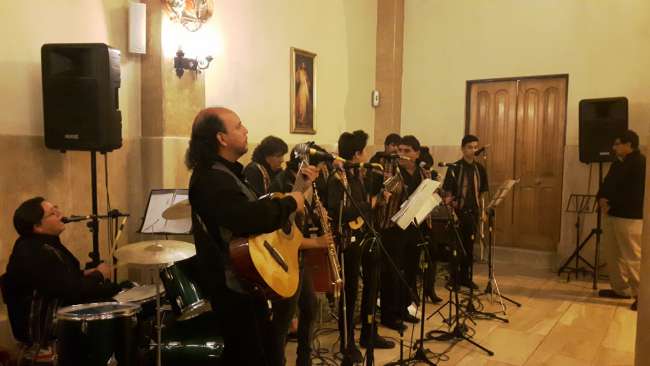
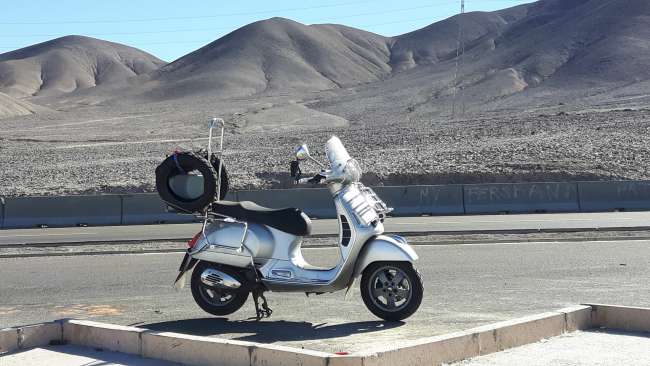
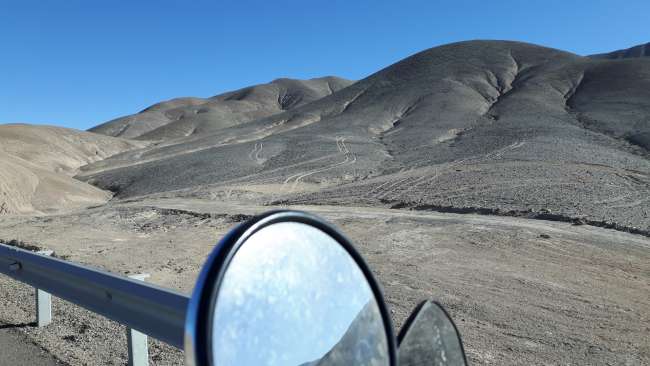
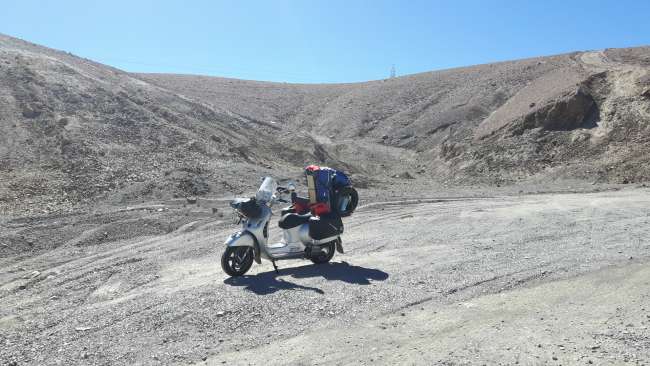
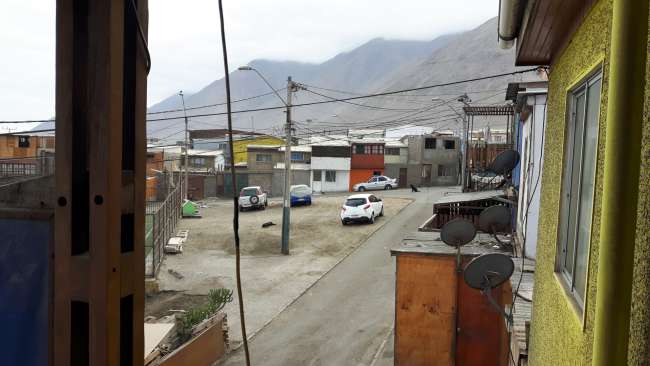
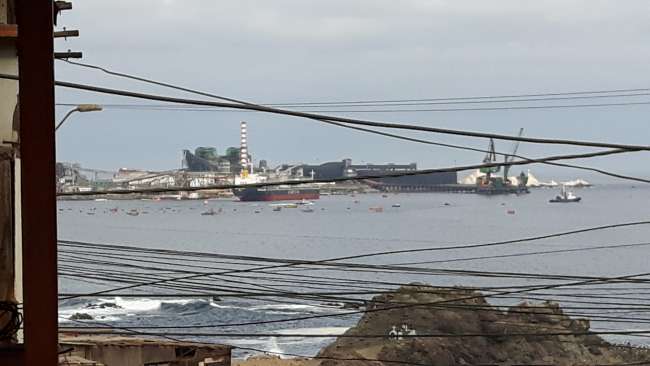
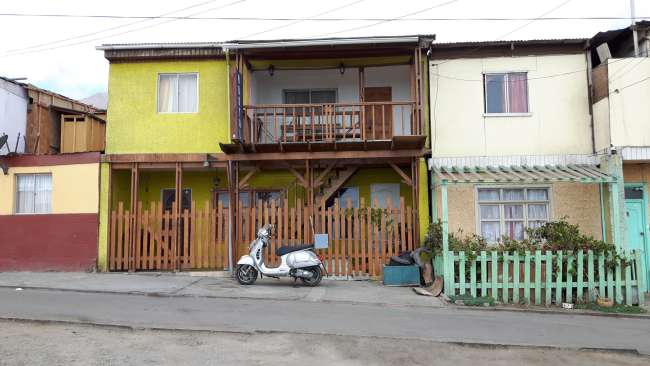
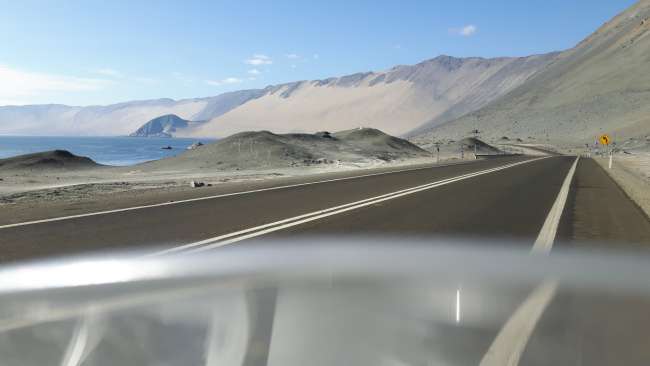
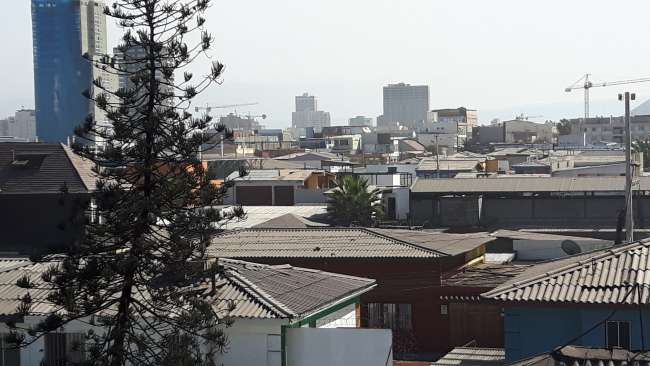
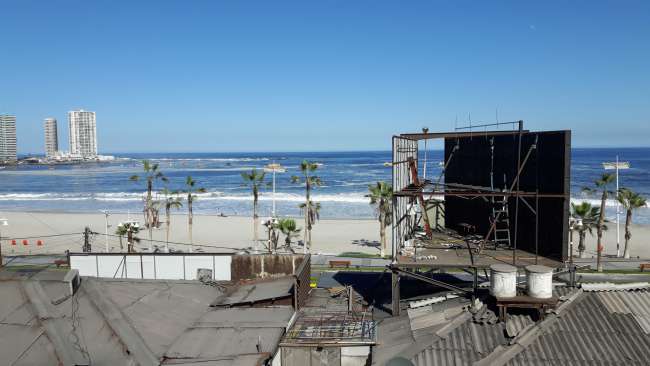
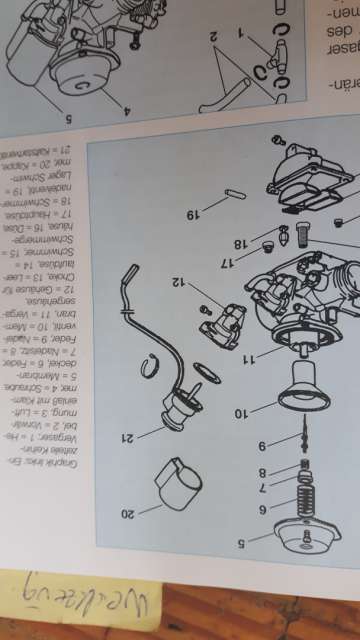
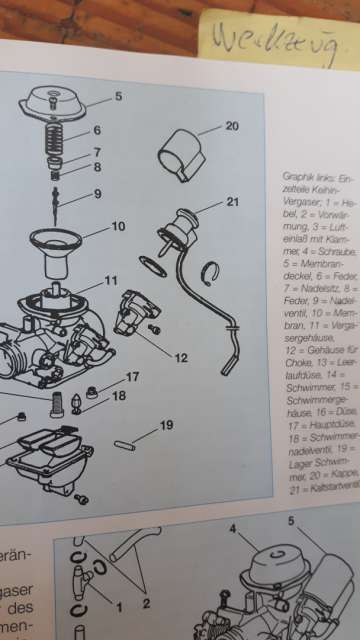
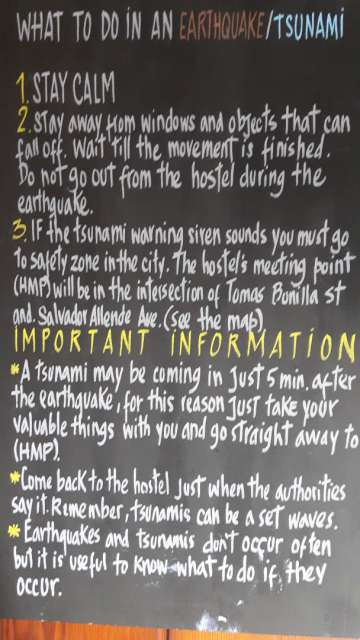
Sau npe yuav ntawv xov xwm
10.05.
Today, it is cloudy. Very unusual and correspondingly cold, but I still have breakfast outside. And when the sun briefly appears, I take a photo of my seat in the courtyard.

The Chile road map on the table.
How should I continue after San Pedro de Atacama?
Kind and almost warm farewell from the hostel father.
The sky has become overcast again, revealing a completely new desert landscape.
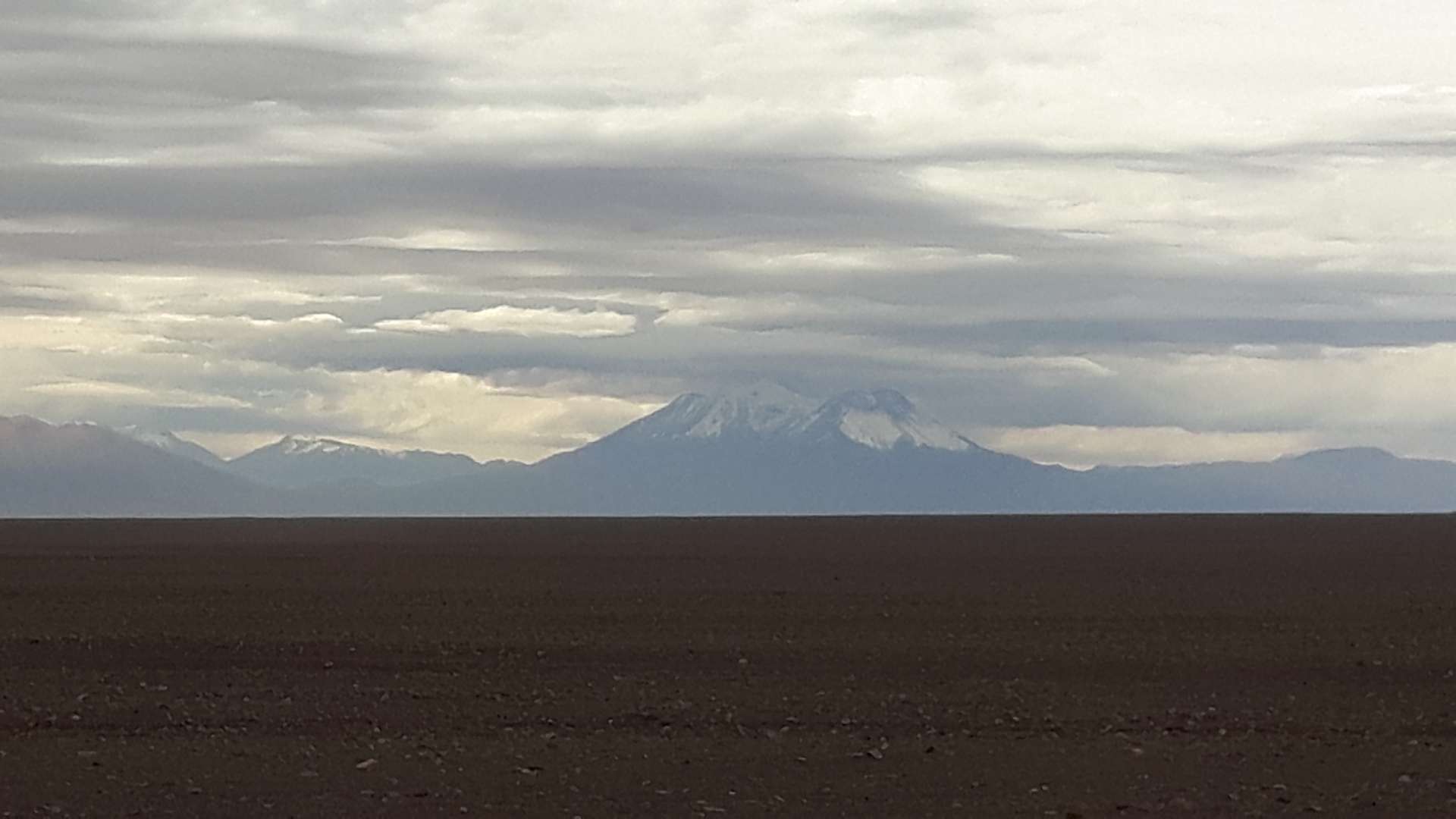

I can't descend. Unlike the Pan-American Highway, there are no guardrails here to lean on, and the road signs are in soft gravel...
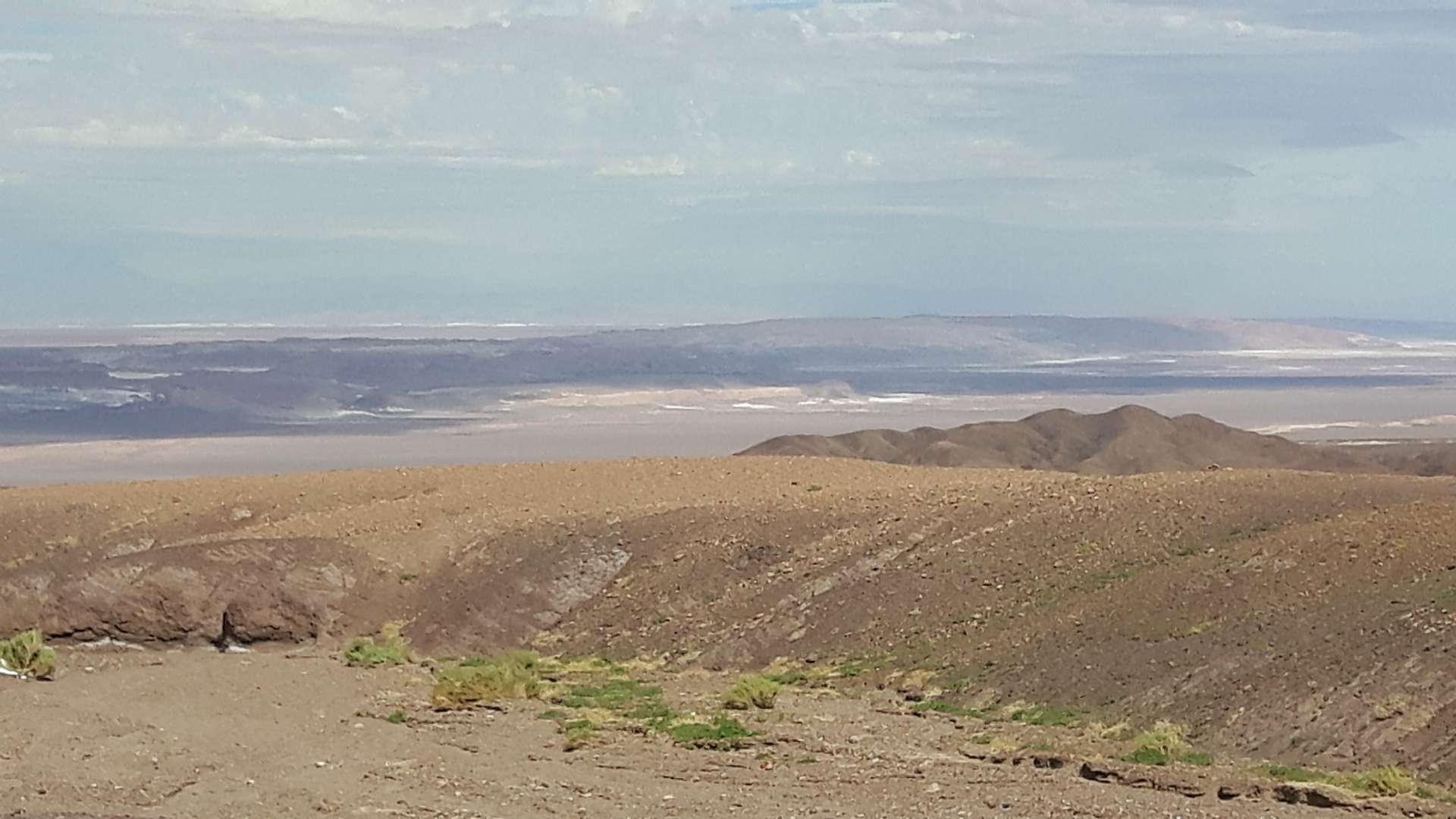

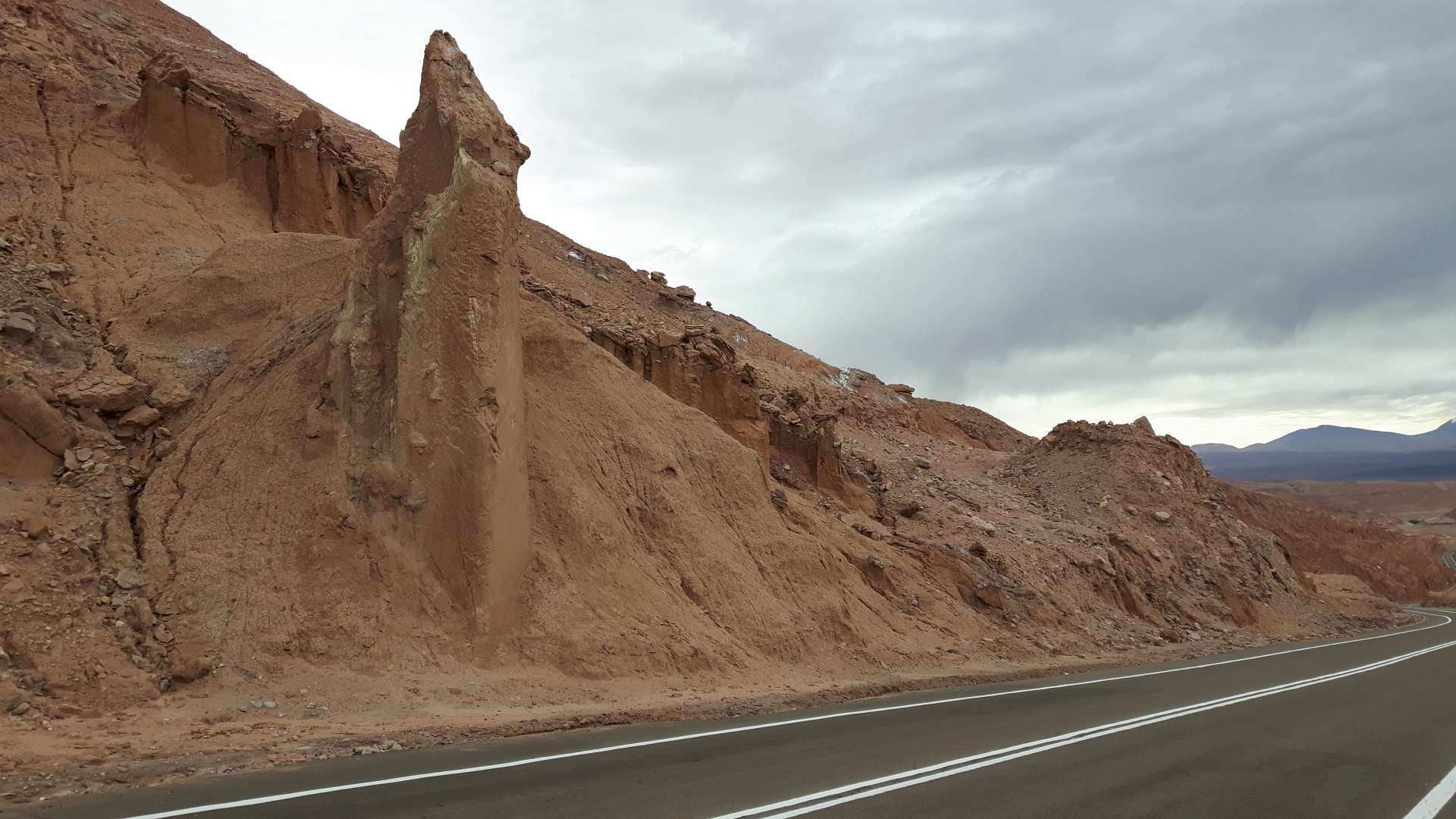
The wind plays with the clay-rich and accordingly malleable mineral
During a large part of this tour, it is unsettling to me that I feel like I have more descents than arduous ascents. But San Pedro is at an altitude of 2,400 meters. And yet, the descents I am currently experiencing make me uncertain about how I will get back up in two days. Should I reduce my jet?
It doesn't take long and I arrive at a dusty square in San Pedro. The sky is still gray-violet-blue and hazy, and on the square, I notice a yellow VW van that reminds me of Nora's adventures in just such a yellow bus. I look over with curiosity, make eye contact, and slowly roll towards three long-term travelers. At first, there are two, an Argentinean who makes art objects and a Peruvian - but then I see another little one in the interior, sitting in his high chair, about a year and a half old, in a good mood. Yes, they have been traveling for a long time. The Argentinean artist is not their husband or partner, but a motorcyclist like me who seems to have joined the small family. I haven't met their husband. It's already an obscure situation. It has an element of pure travel adventure and the highest improvisational talent. The little one is named Eliot, I don't remember the other two names. They are cooking spaghetti with parmesan, and they offer me a plate as well. If they hadn't changed their location today - going somewhere to camp wild - I would have shown up with a bottle of wine.
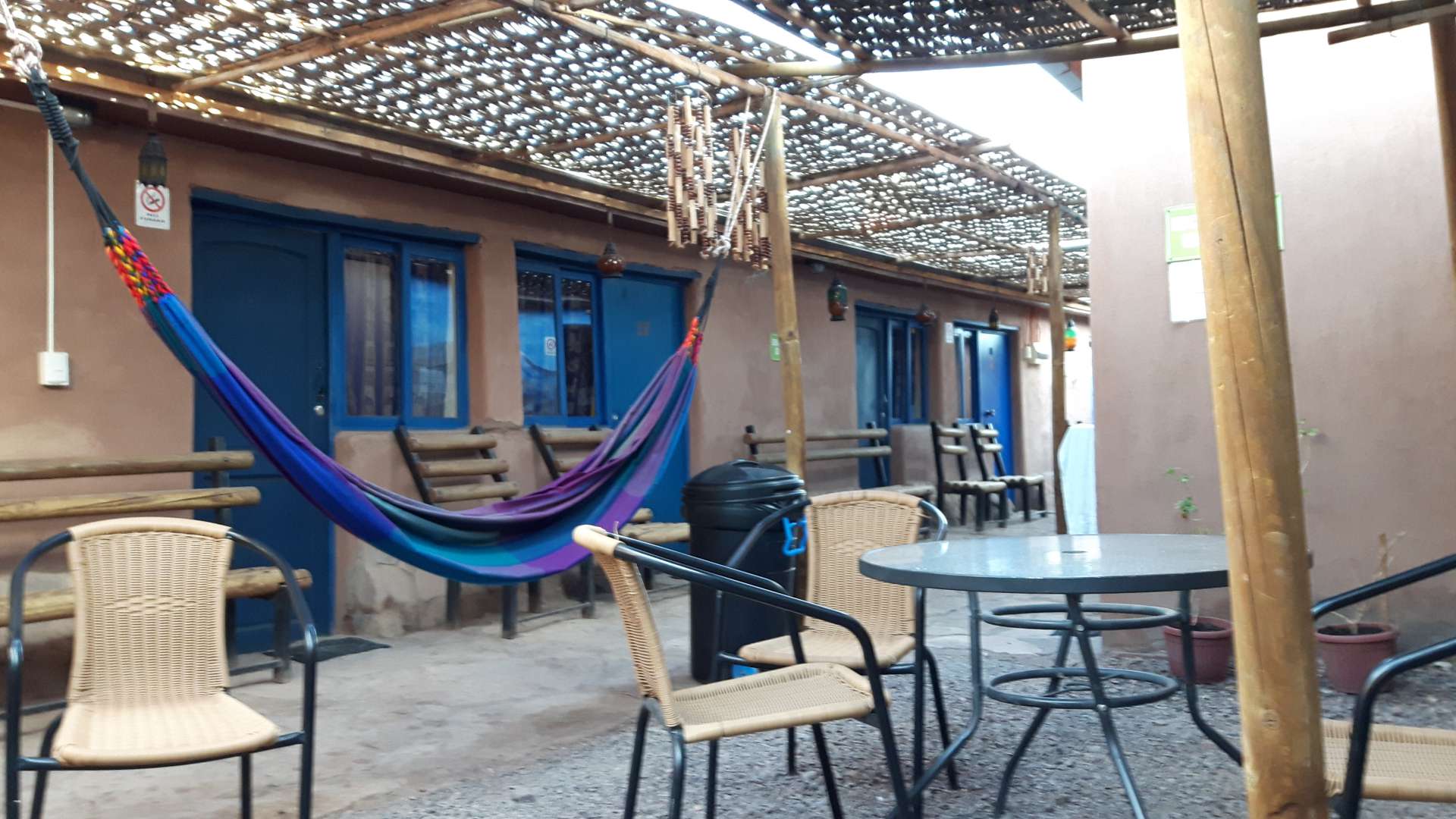
This place also feels like the winter season. I have the triple room to myself
Nice farewell and I drive directly to the hostel I booked in Calama. It is also a adobe house with a large courtyard from which the different rooms, kitchen, etc. can be entered. Everything is perfect. I completely unload the Vespa and leave it outside. Nothing will happen in this town of 5,000 inhabitants.
I strengthen myself with a cup of tea, write some apps, and then go into town to organize the tour to the geysers for tomorrow. There are many offers for the surrounding area, but I have already made my decision.
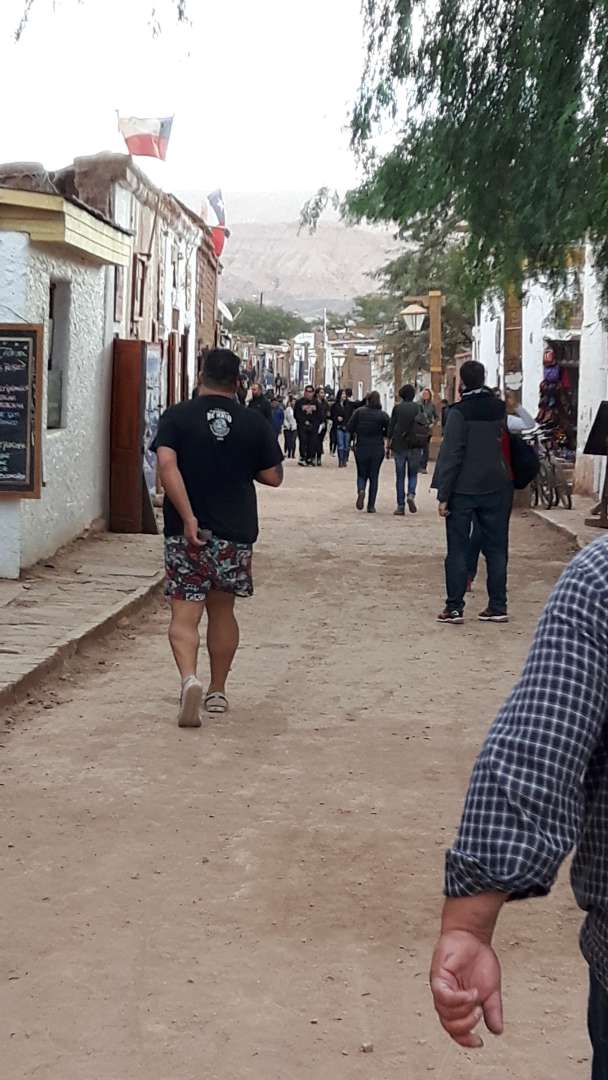
Many who camp in the wild and cannot shower every day slowly take on the color of the dust. Hair and skin areas..
Later, as I wander through the dusty "pedestrian zone," there is an impressive final image of this day.
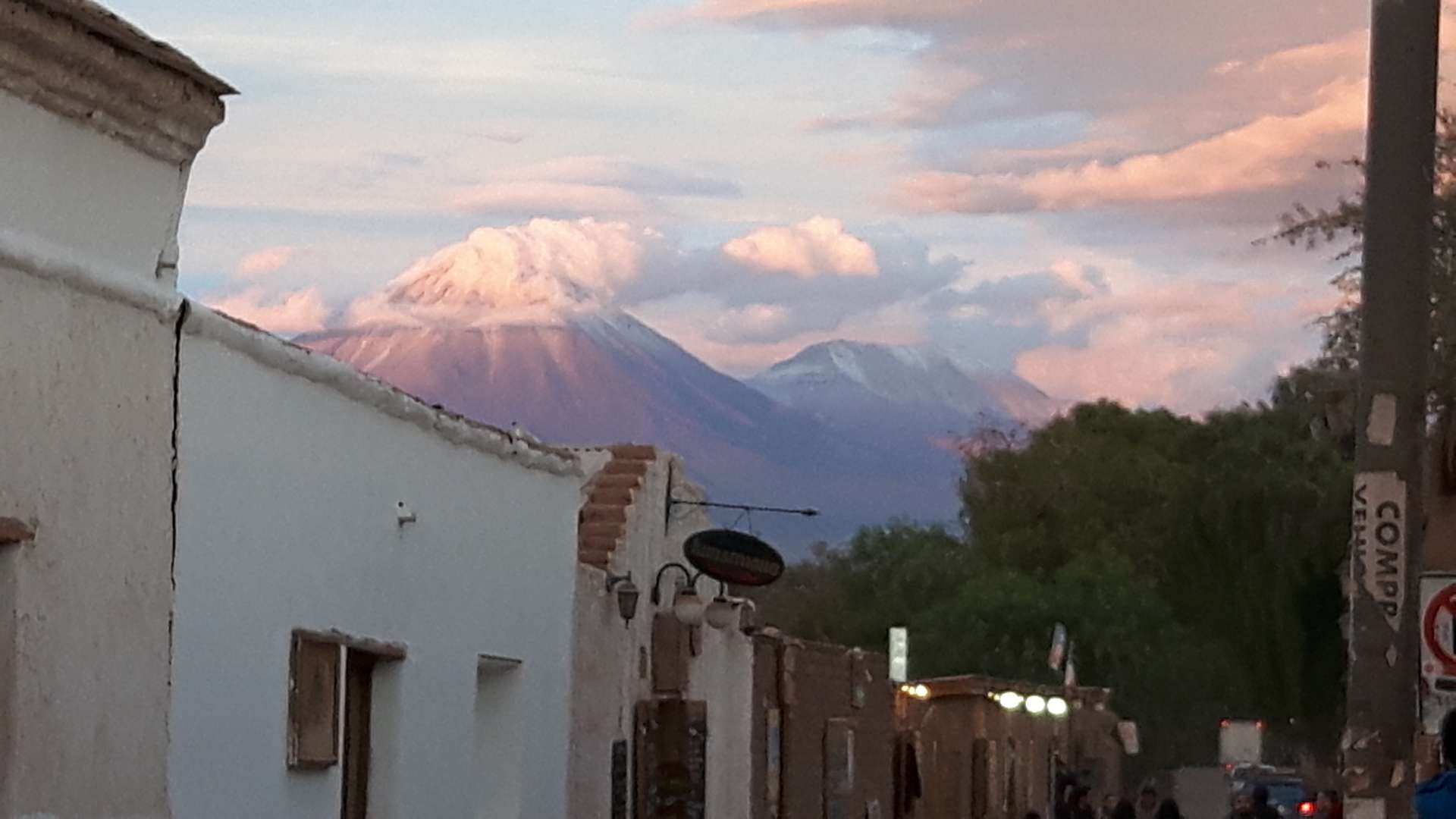
A steaming volcano or an optical illusion?
This morning, the smartie alarm goes off at half past four. Around 5 o'clock, I will be picked up for the tour to the geysers. It is cold in the sprinter, and we drive for an hour and a half in the darkness. I listen to Tchaikovsky and Liszt, doze off a bit, and then I am awakened by the announcements of our guide. I am the only gringo, the rest are from Chile, Brazil, and Argentina. I don't want the guide to translate into English just for me, so I say that I understand him well enough. That worked out quite well.
There is a short stop at the organization responsible for the area, which asks for 10,000 CLP, and then we set off. We are 4,200 meters high, and although deep breathing doesn't lead to gasping for breath, in the first few minutes, every slight movement affects the heart. But that fades, and now we walk along paths marked with rocks to the water fountains that bubble up from the ground and produce a lot of steam. The sun is not yet visible. Minus 4 degrees make themselves felt. It's quite impressive. We walk on solid ground and see how steam escapes from small holes or how it bubbles and gurgles inside them. It's like boiling eggs at home. And there is movement in the spectacle. While until now, only a faint and hesitant bubbling could be heard, suddenly, without warning, a water fountain shoots out of the opening, engulfing everything around it in mist. The sounds coming from the depths of the earth sound dangerous. I wonder how the responsible people can know that at the spots where the tourists are allowed to walk, a small crater will not open at that very moment and instead of fire, spew water? I put my hands in the boiling water and try it. It tastes slightly salty but not sulfurous and does not smell like it either.

What was a fountain just now immediately turns into white steam in this morning cold

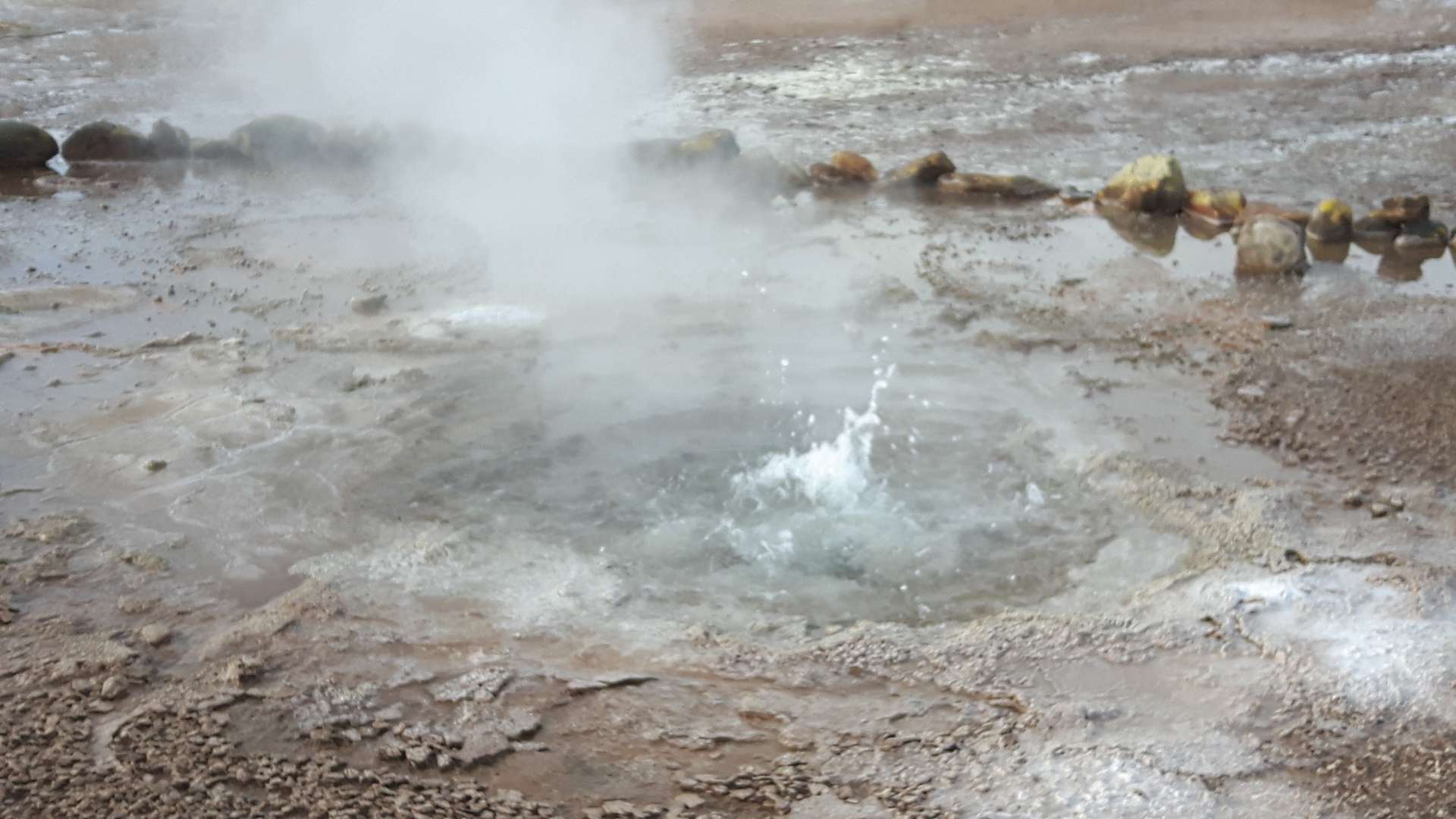
90 degrees shoot out from the earth's interior, sometimes with more pressure, sometimes with less, and doesn't taste like sulfur
Meanwhile, the sun has risen over the mountain ridges, the moon is gone - it's full moon, and its silver light accompanied us on the journey - it is getting warm slowly, and the slopes on the mountains show different colors and layers.

About 150 million years ago, the shifting of plates between the Pacific and the continent started - initially on a smaller scale, and 60 million years ago, it led to the impressive folds we see today. And according to Wikipedia, the Andes are still growing. They stretch for 7,500 km along the Pacific coast and display impressive peaks at 6,000 meters.
Nevertheless, Perito Moreno impressed me more.
On the way back, we see a group of llamas that have rehearsed their poses for the photographing tourists.

They were on the verge of extinction once, but now they are back and have no fear of humans
In the afternoon, we are back, and instead of taking a nap, I have to figure out how to proceed. Should I go up the Jama Pass, which shows a proud 4,200 m on the altitude scale, or go back to Calama and continue north to Peru from there.
I am not making any progress now, and I prefer to further reduce the jet on the Vespa to be prepared for tomorrow's ride. Across from the hostel, there is a wide sliding gate behind which there is certainly plenty of space and shade. Because removing the carburetor and manipulating jets in the blazing sun does not seem so pleasant to me.
I knock on the sliding door, and a little later, the owner of the property appears. A suspicious face. "Soy Thomas de Alemana," I introduce myself and try to explain the rather complicated situation to him, why I would like to take apart my carburetor on his property.
He becomes curious, but doesn't understand everything and calls his friend, who speaks English and translates for me. Yes, I can use the space, and after two hours of experimenting, I am done. Then a nice neighbor joins us, who knows the trick with reducing the jet size and even gives me some copper wire. Another nice Chilean acquaintance.
I only have a map of Chile and Peru, and now I'm going into town to get maps of Argentina and Bolivia. Unfortunately, the two bookstores have to pass. When will I come across a city of this size again? Maybe Lima.
The evening shows me, after my experience in Vallenar with the funeral service, how "church is celebrated" here. First, the entrance to the church is always open and can be accessed from the main square without stairs. Whether it's services or devotions, anyone can come in, whether it's children on their skateboards, dogs, or indecisive people who just want to stop and watch from the outside. From the afternoon, I know that something will happen here tonight. Musical instruments, music stands, and microphones have been set up, and I can't imagine that there will be gentle church songs accompanying it. When I enter the church, I am enveloped in a cloud of incense. The church is filled with incense smoke up to the roof, and I think to myself that it must also have a stimulating effect.
First, the evening devotion takes place, and then the venerable and respectable pastor calls the members of the family to the front who have brought a still-wrapped holy statue for consecration. By now, it's almost like a party. The pastor blesses and sprinkles holy smoke over the first and later the second statue, and then the music group - consisting of at least 10 people - takes over. They are singing "sacred" songs, but with so much enthusiasm that the first churchgoers move to the appropriate rhythm. I can hear the panpipes, banjos, guitars, and of course, the drums, which the drummer plays with great fervor.
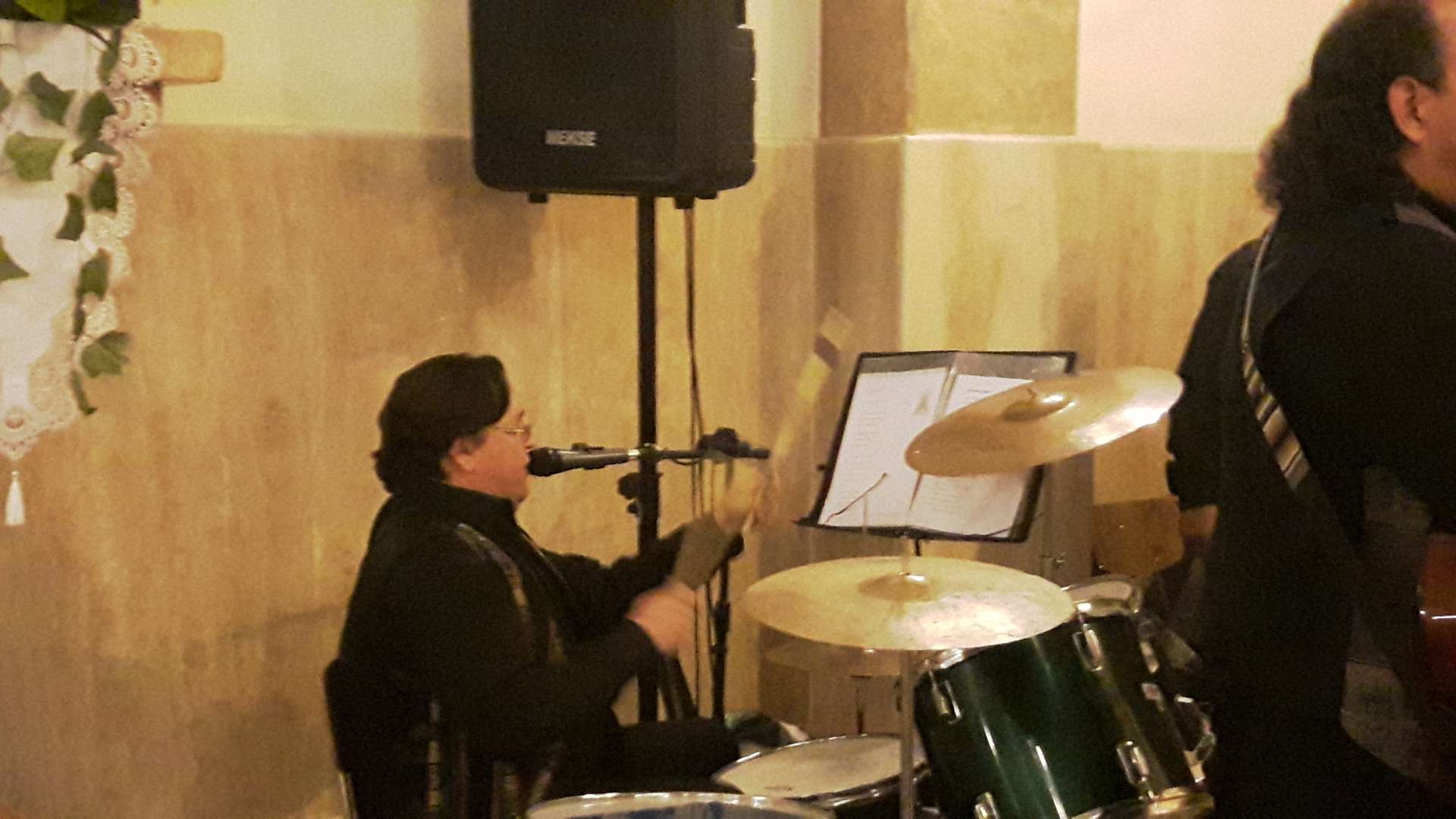
The drummer with great fervor
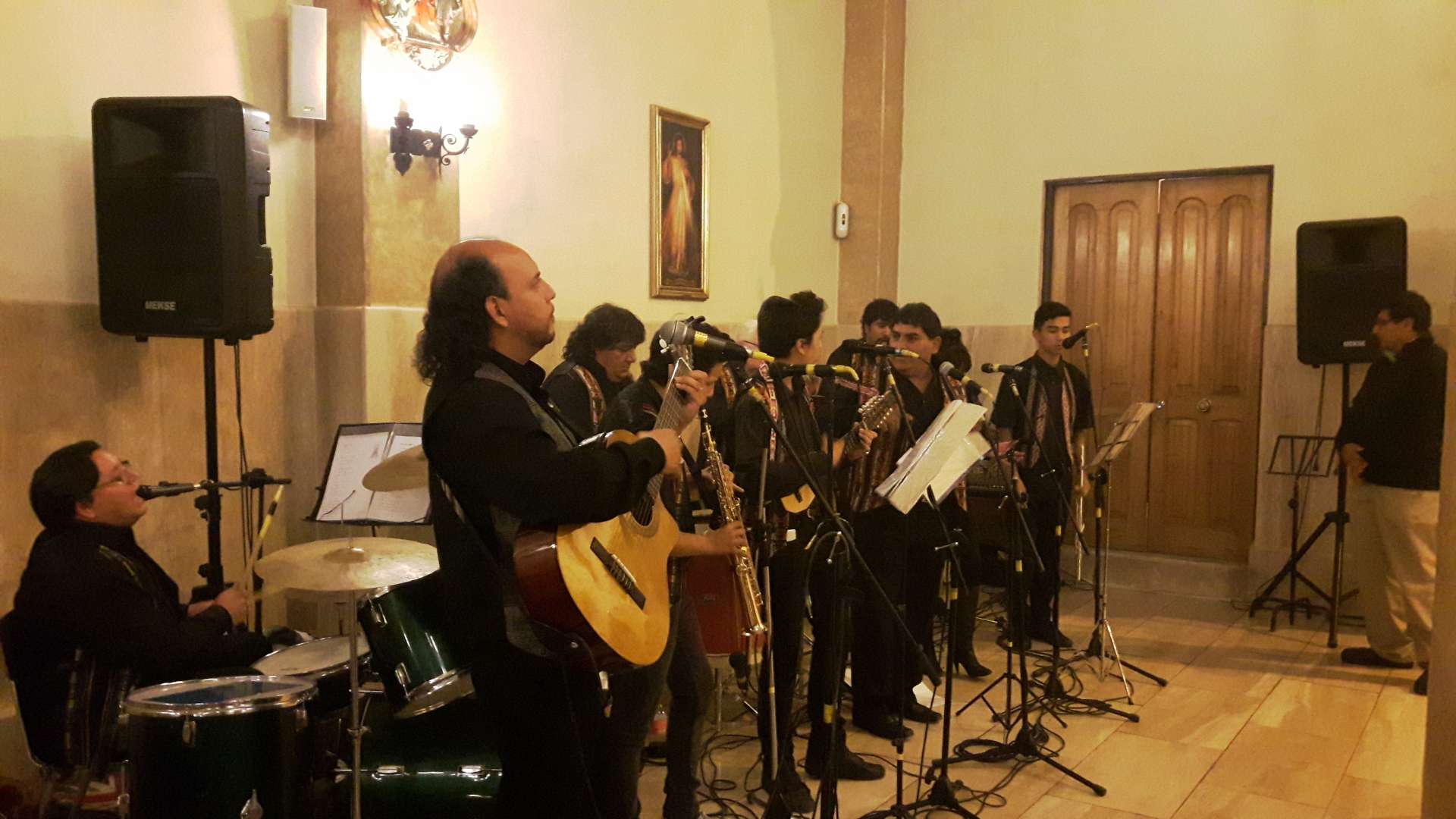
In the meantime, a dog gets lost among the tangle of many human legs but finds his way back out of the band without barking. I suspect he has been a guest of this holy house thanks to the open church doors.
Yes, it's impressive how religion/church is dealt with here, how religion and church are taken into everyday life. Our empty churches could learn a lot from this, but it's also the mentality of the South Americans that makes it possible.
13.05.
This day begins with a leisurely breakfast with Sasha, the solo traveler and computer specialist from Thuringia. He is filled with his experiences, not only here in South America, but also in Hawaii, the Galapagos Islands, Guatemala, where he climbed volcanoes and competed with turtles in swimming. But time is pressing for me; it's already 11:00, and the Vespa is not packed yet.
My plan to visit the copper mine again fails because today is Sunday and no guided tours are offered, according to the gatekeeper who stopped me.
And up we go from 2,200 to 3,200 m. An app called GPS Status now gives me the exact altitude information.
Despite reducing the jet in San Pedro, the headwind still doesn't let it go more than 21 km/h. But it holds up. The engine sounds calm, but when I give it more gas, it jerks and almost gives up. Is it the spark plug? Finally, we reach the summit, and I focus on the landscape and the mountains, which seem to be running out of air, and I already choose a nice subject for the next photo. Then my gaze falls on the temperature gauge, which usually stays in the middle range and has not given any cause for concern before. But now, the needle slowly but steadily moves up, pauses for a moment, goes back to normal, but then stays up and approaches the dangerous red mark. I pull over to the side and turn off the engine.
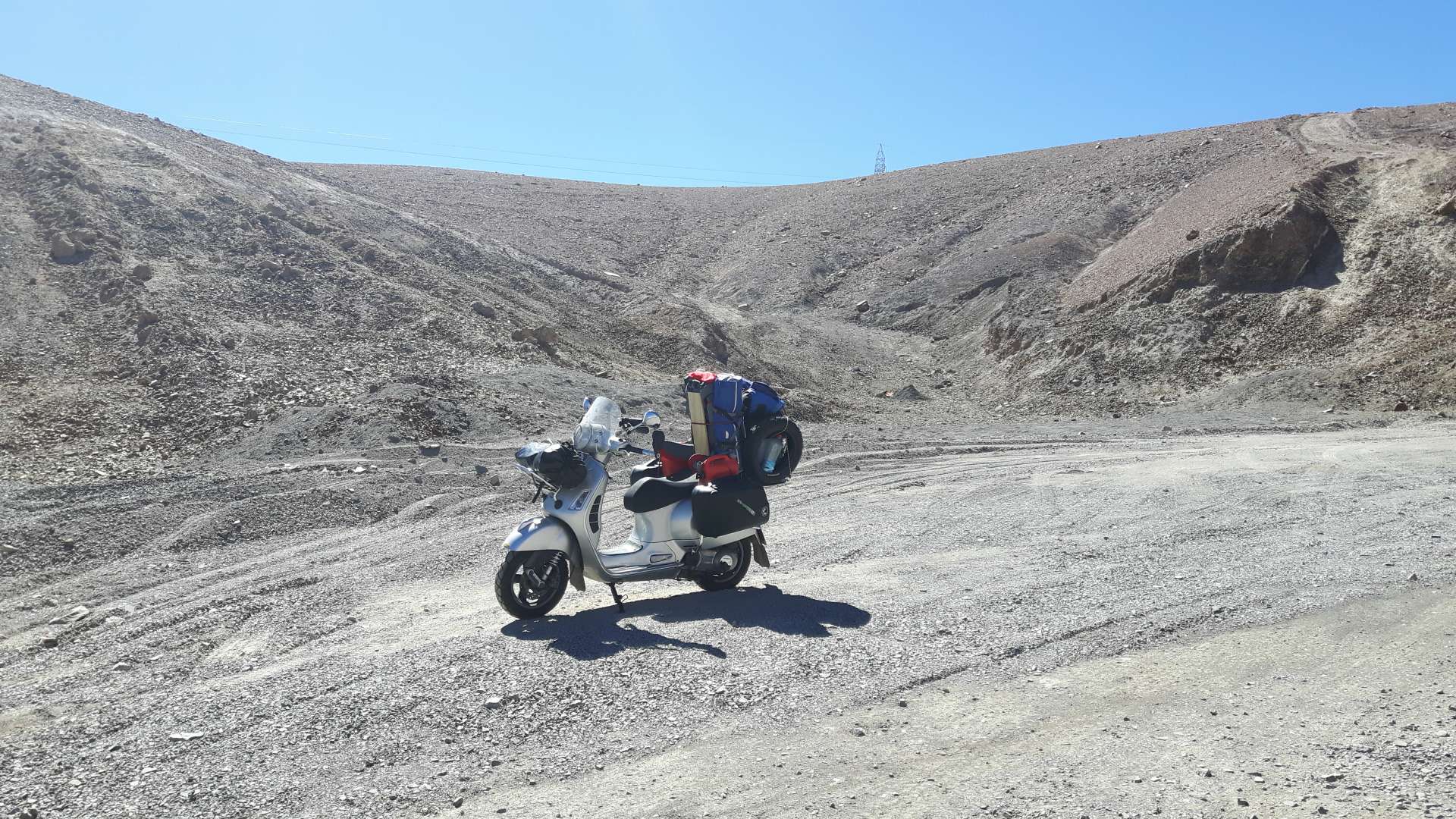
Desert, sun, no cloud in the sky, but I remain calm. My water reserves are sufficient, the spare fuel canisters are filled, and I have the right tools. I dismount, walk around the Vespa, and notice that the rear wheel is wet. Here in the desert?? It's not gasoline, so it must be coolant. Oil would have been greasy. With that, my original idea that it has something to do with the jet is gone. We are at about 1,500 meters, maybe that's why the engine is overheating? But I don't need to pursue this theory anymore. I remove the carburetor to check if the coolant lines are leaking. I spare you the details. I take the opportunity to restore the jet to its normal state and still can't find the leak. I pour in my precious water, and I can already hear it trickle away. The good water seeps into the dust. But I find the cause, fix it, and now I have to make a decision. The remaining water for me or for the Vespa. I choose the Vespa because I know that cars pass by occasionally, and they might give me water. The theory proves correct. I hear a car, pull over to the side, and wave. There is no doubt; they stop immediately. I explain my problem, and the Chilean understands, opens his trunk, and to my horror, I only see full Sprite and cola bottles, but my helper takes out a red container of DRINKING WATER and walks to the Vespa. I have a funnel; we fill up, and still no trickling or dripping, the damage is fixed. But that's not all. He sees my empty water bottles and gives me the rest from his container. I point to his family, who are waiting in the car, but he waves it off and probably keeps his eyes on the cola and Sprite stocks.
In retrospect, today I almost had a major disaster. Manageable amounts of water, a technical problem whose cause was not easy to find, and desolation to both horizons. But I didn't let it bother me, I didn't panic, but worked through the possibilities that were available. So it was a good experience I had today.
The journey here to Tocopilla, located directly on the Pacific, went according to plan, no special events, and finally, I see it, the Pacific. I'm happy that the remaining travel time will be manageable, but then there are more small inclines, and the mountains come between the Pacific and me. But then the final descent begins on a winding road that is in the best condition, and I'm taken aback when I look at the horizon. No more sea is visible - or is it? But apparently, there is a very powerful white surf - or maybe it's clouds, and I am still so high up that I can look down on them? I can't believe either, stop pondering, and concentrate on the many curves and my rearview mirror, which shows impatient truck drivers to me.
The sun is already so low that I can hardly see anything anymore, and I am happy about every mountain behind which it has to withdraw. Yes, then it's gone, and I am under the layer of clouds.

The view from my communal balcony... harbor town where copper and nitrates from nearby salt lakes are shipped. Some fishing and high unemployment. Bleakness, but South American charm
Tocopilla, with 30,000 inhabitants, primarily lives off of the busy port business (nitrates from the nearby salt lake). It shows itself to me with South American charm. Everything is very poor, total wrecks with black stains under the engines at the roadside, run-down sidewalks, and heavy truck traffic towards the port on Ruta 1. There is a tropical, humid heat here, and the smell of saltwater and fish fills my nose. No tourism, just a South American city in the late afternoon.
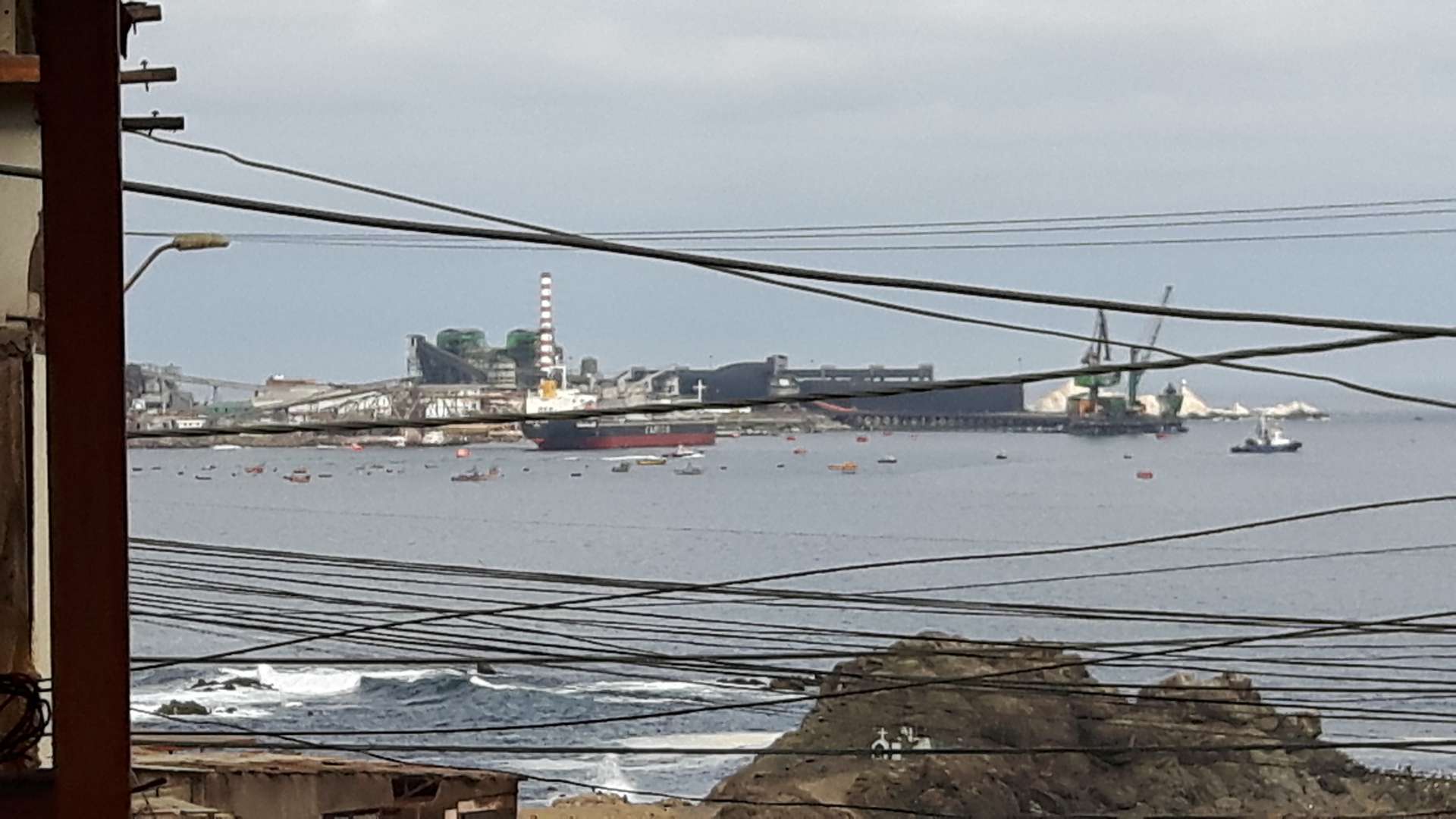
The power lines are always in the foreground here too
The hostel is quickly found, right on Ruta 1 and right on the Pacific. I have my room on the second floor and now I'm sitting here on the communal balcony, writing down my experiences. The clocks were set back yesterday. I was just surprised this evening that it is already dark here at 7:00 pm.
Tomorrow, I will continue on the busy Ruta 1 going north - but first, the tap water must be replaced with real coolant.
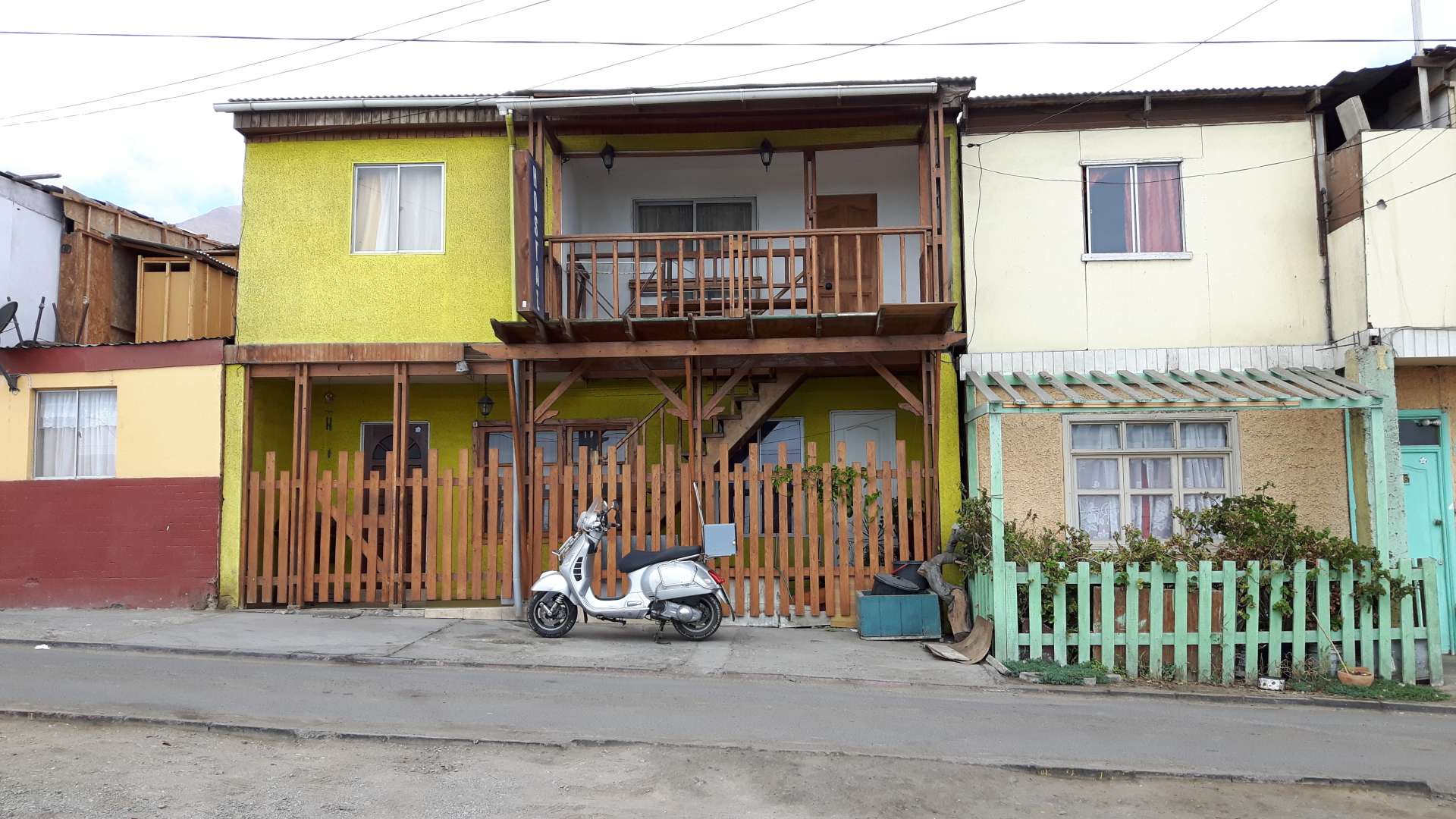
I could have put the Vespa in the living room to protect it from evil robbers...
Above on the balcony, my breakfast and writing spot with a view of the Pacific and Ruta 1
One more thing on the side: today is May 14th, Mother's Day. When I enter the living room of my hostel family, I see a table full of gifts. Birthday? I ask - no, "dia de mama." So here too, I think, surprised and without any idea from the Third Reich.
The hostel father even offers to let me put my Vespa in the living room, which also serves as the entrance to the house. But I decline that offer; it would really be too much. But that's how Chileans are!!
Of course, I'm curious about the results in North Rhine-Westphalia. Kraft is resigning. Black-yellow coalition? Comeback for Lindner? Schulz shouldn't have let himself be used. Gabriel is in a good position, and Schulz has to redefine himself...
Sau npe yuav ntawv xov xwm
Teb
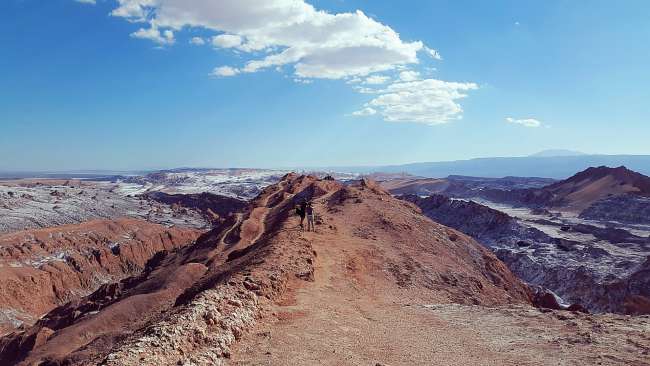
Daim ntawv qhia txog kev mus ncig Chile
